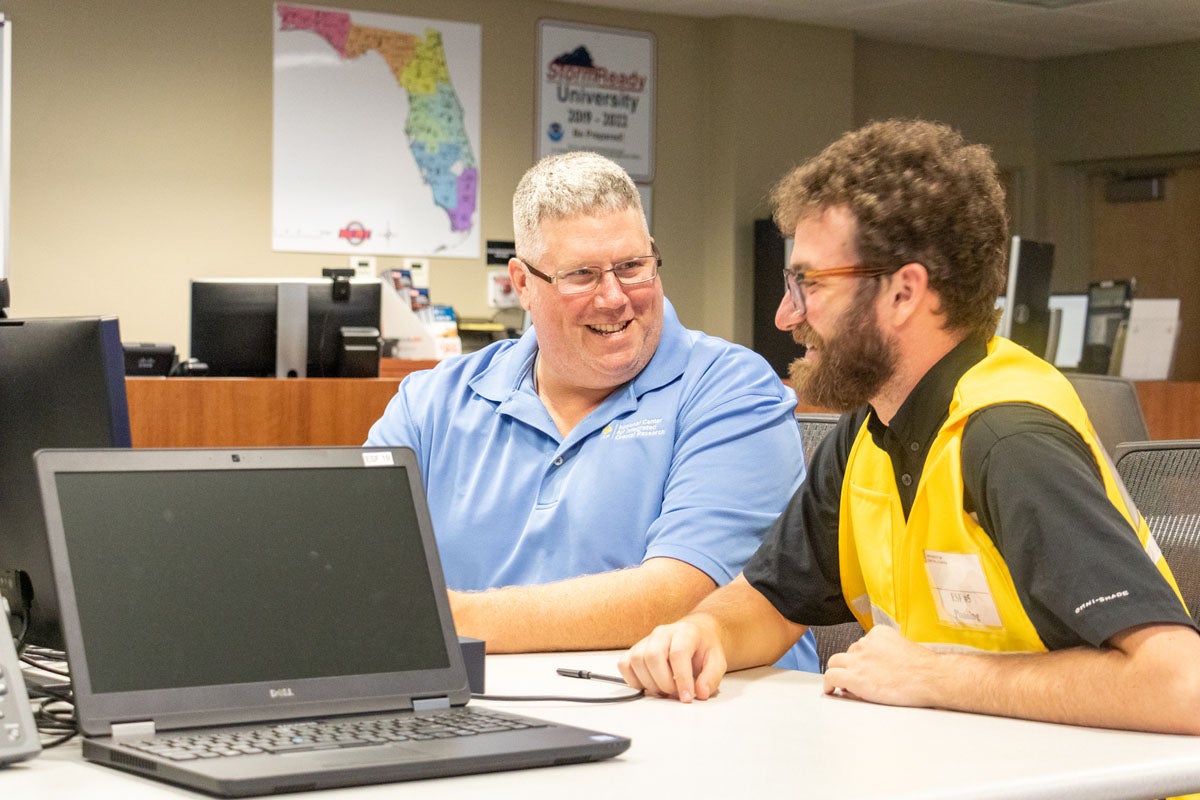When buying a home, people often weigh the quality of the schools, crime rates, cost and property values into their buying equation. Rarely do they think about disaster risk, mostly because there is no easy way to do so.
UCF Professor Chris Emrich and his team are about to change all that. Today, the National Academies of Sciences, Engineering and Medicine Gulf Research Program awarded Emrich and his team $3.4 million to help people make smarter housing decisions based on hazard risks and mitigation of those risks.
“To make informed decisions about where to live and how to protect housing investments, residents require knowledge about potential natural-hazard exposure and impacts along with available mitigation strategies,” Emrich says. “This project aims to advance community resilience by improving people’s understanding of risks and their willingness to undertake hazard mitigation when choosing where they live.”
The idea isn’t to limit where people should live based on potential risk, rather to give renters and buyers a more complete picture of potential hazards and what it would take to protect a property against those risks, such as hurricanes, sea rise and sink holes, among other threats. Hazard and risk information is voluminous if you know where to look and how to read it, but can be confusing and time consuming for busy buyers to undertake. So, the UCF-led team will gather the information, analyze it and create a rating system or HazardScore for every parcel of land, community, county and state in the gulf region.
The team will also develop easy-to-use tools such as apps, maps and websites, which potential buyers could use to explore and become more “hazard aware,” The team plans to build tools to easily plug into real estate sites such as Zillow, Realtor, Redfin and Trulia or neighborhood social networking sites such as Nextdoor. These sites would allow potential buyers and current homeowners to easily see what a property’s HazardScore is and quickly understand how to mitigate any threats a home might be subjected to before making a final decision.
This award is part of the National Academies of Sciences, Engineering and Medicine’s Gulf Research Program. A total of $10.7 million in grant awards was announced for four new projects focused on enhancing community resilience in the U.S. Gulf of Mexico region. UCF’s award was the largest of the group.
In recent decades, Gulf Coast communities have dealt with more frequent and severe impacts from climate sensitive hazards, extreme weather and human-caused disasters. The capacity to recover from these disasters can vary from one community to the next, depending on a range of social, economic, environmental and other factors. Chronically stressed communities can find the path to recovery particularly difficult.
“Based on experiences with events such as a major hurricane or the aftermath of the Deepwater Horizon disaster in 2010, many gulf coast communities have an increased interest in taking actions to enhance their resilience,” says Chris Rea, associate program officer for the Gulf Research Program. “However, they don’t always know where to start. Scientists studying resilience have a growing wealth of knowledge that can help if they can get it to the people that need it. With this grant competition, we set out to help bridge the gap between the science and practice of resilience.”
The team says many residents are unaware that the building codes and zoning regulations they expect to protect them in a disaster have likely become outdated as environmental stressors, local development patterns and construction practices have changed over time.
The interdisciplinary team of 19 researchers comes from seven universities (University of Central Florida, Arizona State University, Florida Atlantic University, Louisiana State University, University of Florida, University of New Orleans, and the University of South Carolina), Louisiana Sea Grant and RAND Corp. The team consists of experts in the areas of geography, engineering, economics, hospitality/tourism, political science, ecology , environmental law, sustainability, mitigation, resilience, behavioral health sciences, housing policy, climate adaptation, and science/technical communication to bring to life this ambitious project over three years.
UCF’s contributors include: engineering Assistant Professor Thomas Wahl, biology Assistant Professor Kristy Lewis, Rosen College of Hospitality Management Assistant Professor Sergio Alvarez, political science Assistant Professor Jacopo Baggio, and English Assistant Professor Sonia Stephens.
“We truly believe that if people see a home as the first line of defense and think about the home in terms of safety they will avoid many losses if a disaster does occur,” Emrich says. “We are attempting to shift the disaster risk/awareness paradigm and help people make smarter housing decisions based on real risk potentials and mitigation of those risks. In doing so, we aim to build both individual and community resilience.”
Emrich is an endowed associate professor of environmental science and public administration in the School of Public Administration and a founding member of the National Center for Integrated Coastal Research. Emrich is also a member of the Sustainable Coastal Systems Cluster. He holds multiple degrees and worked as the associate director of the Hazards and Vulnerability Research Institute at University of South Carolina before joining UCF in 2016. He has also worked with multiple government and private entities supporting disaster preparedness and community resilience since receiving his doctorate in 2005, including management of FEMA’s Geospatial Intelligence Unit overseeing long-term recovery from Florida’s 2004-2005 storms.
Since arriving at UCF, he has assisted Florida, South Carolina, Texas, Louisiana, Puerto Rico, and West Virginia with Department of Housing and Urban Development-funded disaster impact assessment and recovery program development. Emrich’s research area includes applying geospatial technologies to emergency-management planning and practice, long-term disaster recovery, and the intersection of social vulnerability and community resilience in the face of catastrophe.




